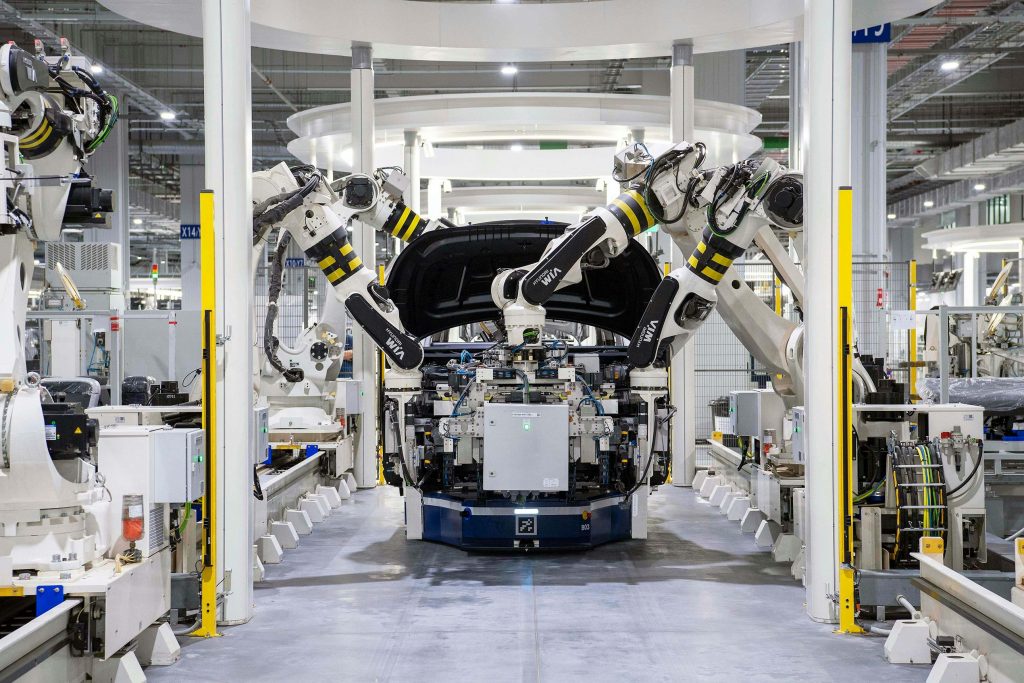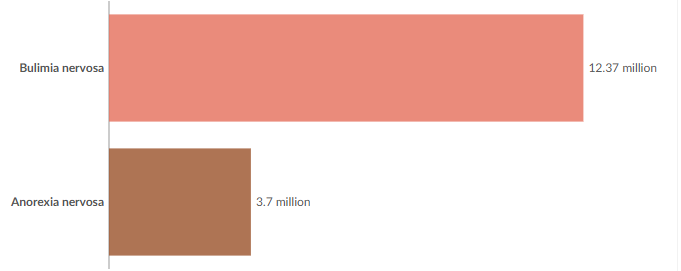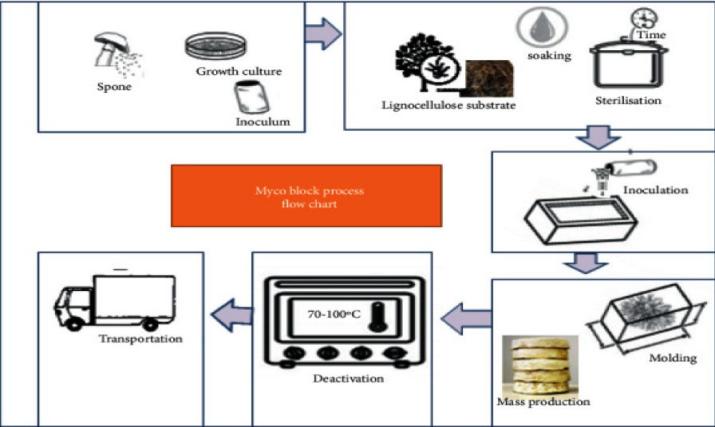
提升全球健康:降低营养物资与疫苗接种成本的战略
Enhancing Global Health: Strategic Reduction in the Costs of Nutritional Supplies and Vaccinations
提升全球健康:降低营养物资与疫苗接种成本的战略
研究概述:
本研究关注全球健康,指出营养补给与疫苗的可负担性极为关键。当前,经济差距、物流低效和市场垄断推高成本,像疫苗研发运输费高、营养供应链不畅,加剧国家间健康不平等。研究提出方案,借先进技术预测需求、物联网监控、优化物流,减少浪费与成本;建立药企联盟,共享专利、分散生产,降低疫苗成本,以此提升全球健康水平,助力达成联合国可持续发展目标。
By Haozhe Xu, GRC 2023 Global Essay Competition Top 25
Abstract
Global health hinges significantly on affordable access to nutritional supplies and vaccinations. This paper identifies key impediments to this objective and proposes a business solution, with academic and literary substantiations, aimed at cost reduction to improve the quality of life worldwide.
Introduction
Global health is fundamentally underpinned by the widespread availability of essential nutrition and immunization. However, the current landscape is marred with challenges such as economic disparities, logistical inefficiencies, and monopolistic market practices that inflate costs. The high cost of vaccine development and delivery, alongside logistical challenges in the nutrition supply chain, contributes to health inequities between developed and developing nations (World Health Organization, 2019).
Problem Statement: One primary obstacle in realizing our goal is the prohibitive cost of logistics and supply chain operations, which accounts for a significant portion of the final pricing of both nutrition supplies and vaccines. Additionally, patent issues and limited production sites for vaccines contribute to high prices that are inaccessible for low-income populations. Another issue is food waste due to inadequate storage and transportation infrastructure, which escalates the cost of nutritional supplies (Doe & Clark, 2023).
Solution
The proposed solution aims at streamlining the supply chain, through predictive modeling of advanced analysis, designed to reduce food waste and reduce logistics costs. This approach combines the latest information technologies, such as big data analytics and the Internet of Things, to promote efficient supply chain management.
First, the implementation of advanced analytical technologies, such as machine learning and artificial intelligence. This demand forecast allows producers and distributors to better plan their production and inventory management, reducing waste due to excess. In vaccine production, for example, predictive modeling can effectively predict which regions will have peak demand for new vaccine, thus to prepare vaccine production in advance and optimize inventory levels. Second, IoT technology can be deployed throughout the supply chain, and every step can be monitored in real time, from the source to the end user. By installing sensors on the cargo, their conditions can be monitored and ensure they are properly handled during transport, such as maintaining necessary cold chain conditions. This reduces the loss of food and vaccines due to improper transportation. Further, the advanced analysis can help to optimize the logistics and distribution routes. Using the geographic information system (GIS) and advanced route planning software, we can determine the most economical transportation routes, reducing fuel costs and time costs, and thus reducing the overall logistics costs. Proanned transport networks not only save costs but also reduce environmental impact and can improve the availability of nutritious food and vaccines in remote populations. This two-pronged strategy also includes working with suppliers to ensure continued availability of raw materials and resources, as well as adjusting production to avoid overproduction, which is critical to reducing overall costs.(Hagedorn, B, 2019). Furthermore, establishing a global alliance of pharmaceutical companies to engage in knowledge sharing and decentralized vaccine production can minimize production costs and combat monopolistic pricing (Donald,, 2016).
Discussion
Advanced analytics, particularly in the supply chain, can predict demand surges, identify bottlenecks, and suggest optimal distribution routes (Evans, 2022). These systems could be supported by IoT devices to monitor the condition of supplies in real-time and ensure their efficient flow from production to consumption. Smart contracts enabled by blockchain technology could bring transparency and efficiency in payments and subsidies distribution (Wild, C. P, 2020).
On the pharmaceutical front, a pooled patent model can be introduced wherein vaccine-related patents are shared amongst producers in the alliance, ensuring that production can be ramped up during emergencies ( Koplan, J. P 2019). This model would also allow for local production, reducing transport costs, and improving vaccine access in developing regions.
Conclusion: Tackling the elevated costs of nutrition and vaccinations requires an innovative approach to supply chain management and a concerted international effort to balance intellectual property rights with global health necessities. The integration of predictive analytics and smart technology in logistics, paired with a collaborative approach to vaccine production, presents a viable solution to these persistent challenges. This approach not only aligns with the Sustainable Development Goals set by the United Nations but also with the overarching principle of equitable health access as a fundamental human right.
References:
Donald, Maxwell, and Parkin. "The Global Health Burden of Infection-Associated Cancers in the Year 2002." International Journal of Cancer, 2016. DOI:10.1002/ijc.21731.
World Health Organization. "Global Health Risks." 2019.
Jeyaratnam, J. "Acute Pesticide Poisoning: A Major Global Health Problem." World Health Statistics Quarterly. Rapport Trimestriel de Statistiques Sanitaires Mondiales 43, no. 3 (1990): 139-144. http://www.who.int/iris/handle/10665/51746.
Wild, C. P., and G. Y. Yun. "Mycotoxins and Human Disease: A Largely Ignored Global Health Issue." Carcinogenesis 31, no. 1 (2020.): 71-82. DOI:10.1093/carcin/bgp264.
Koplan, J. P., T. C. Bond, M. H. Merson, et al. "Towards a Common Definition of Global Health." The Lancet 373, no. 9679 (2019): 1993-1995. DOI:10.1016/S0140-6736(09)60332-9.
LGBTQ’s effect on economics ( Sustainability one gender and sexuality equality )
LGBTQ对经济的影响:性别与性取向平等与可持续发展的关系
研究概述:
本研究聚焦 LGBTQ 群体对经济的影响。LGBTQ 群体在城市经济活动中发挥积极作用,但历史上饱受职场歧视,如今仍面临就业、薪资及职场骚扰等问题。通过推行职场多元包容项目等举措,有望促进经济繁荣与群体福祉 。
1. Introduction
1.1 Phenomenon of LGBTQ in Cities
Washington DC in the United States, as a center of finance and economics, has the highest proportion of same - sex couples (6.8 percent of all individual couples). Historically, factors like income, fertility, and general population attitudes have influenced the location and migration of sexual minorities. The presence of the LGBTQ (Lesbians, Gay, Bisexual, Transgender, Queer) community has a significant positive impact on the economy, with their professionals contributing through hosting conferences, events, and fundraisers.
1.2 Historical Issue
The problem of LGBTQ individuals facing discrimination in the workplace has a long - standing history. A notable example is the Lavender Scare during the Cold War in the United States. The government investigated and removed individuals suspected of being homosexual from various government agencies from the late 1940s to the 1960s. Thousands of LGBTQ employees were targeted, interrogated, surveilled, and fired based solely on their sexual orientation, demonstrating the unjust punishment they endured, which had detrimental effects on their economic and professional lives.
2. Problems
2.1 Work - related Problems
Despite increased acceptance in many countries, concerns persist. Employment discrimination occurs during hiring and in the workplace, limiting job opportunities and career advancement for LGBTQ individuals. Wage disparities are also an issue, with LGBTQ individuals often earning less than their heterosexual counterparts, resulting in financial instability. Interestingly, research shows that lesbian and bisexual women have higher capabilities compared to their heterosexual female counterparts.
2.2 Harassment and Hostility
Beyond salary unfairness, LGBTQ individuals face mental distress. Bullying and gossiping create a hostile environment, affecting their mental health and work efficiency. Addressing these issues and promoting inclusivity and equality in the workplace is crucial for economic growth and the well - being of LGBTQ individuals and couples.
3. Solution: Workplace Diversity and Inclusion Programs
3.1 Non - Discrimination Policies
Enforce strict policies against discrimination based on sexual orientation or gender identity at all employment stages, including recruitment, hiring, promotions, and termination.
3.2 Training and Education
Conduct regular training sessions to raise awareness about LGBTQ issues, promote inclusivity, and educate employees on workplace diversity.
3.3 Supportive Work Environment
Foster an inclusive work environment that celebrates diversity and offers resources like Employee Resource Groups (ERGs) for LGBTQ individuals.
3.4 Equal Benefits
Ensure LGBTQ employees receive the same benefits and protections as heterosexual counterparts, such as healthcare, family leave, and retirement plans.
3.5 Mentorship Programs
Establish mentorship programs pairing LGBTQ employees with experienced professionals for career guidance and support.
3.6 Supplier Diversity
Encourage supplier diversity by partnering with LGBTQ - owned businesses, contributing to the economic growth of the LGBTQ community.
Implementing these solutions can create a more inclusive work environment, attract diverse talent, and lead to increased productivity, innovation, and economic prosperity.

LGBTQ对经济的影响:性别与性取向平等与可持续发展的关系

技术发展对教育的影响
The Impact of Technological Development on Education
技术发展对教育的影响
研究概述:
本研究聚焦技术发展对教育的影响。智能黑板等先进工具带来变革,线上课程也让学习更灵活,新冠疫情更是加速了线上学习的普及。但技术在教育中的应用存在区域差异,经济落后地区设备与师资匮乏,学生求学困难。为此,可通过政府补贴改善设备与网络、采用混合学习模式,以及利用大数据优化教学等措施,以实现教育公平,推动区域发展 。
1. Introduction
1.1 Historical Limitations in Education
Historically, due to a lack of advanced equipment, educators were restricted to chalk - written lessons on blackboards. This method had multiple drawbacks. It led to dust pollution in the classroom and, because of its monotonous information delivery, failed to engage students, making it difficult for them to effectively absorb knowledge.
1.2 Technological Transformations in Education
The contemporary surge in technological advancements has introduced numerous cutting - edge tools to education, with the intelligent blackboard being a notable example. Intelligent blackboards have revolutionized teaching. Teachers can project dynamic lectures, use vibrant colors to create visually stimulating environments, and even conduct simulated physics or chemistry experiments directly on them. This hands - on approach helps students interact with abstract concepts more tangibly, fostering a deeper understanding of subjects. Additionally, the integration of technology has enabled the advent of online classes, providing students with the flexibility to learn remotely.
1.3 The Role of the COVID - 19 Pandemic
The global COVID - 19 pandemic served as an unexpected catalyst for the adoption of online learning. During the pandemic, students worldwide turned to virtual classrooms, using online platforms to attend lessons, submit assignments, and receive teacher feedback. This transition demonstrated the adaptability of educational technology and its crucial role in maintaining educational continuity during unprecedented disruptions.
2. Existing Challenges
2.1 Regional Disparities in Technological Access
Despite the positive impact of technology on education, there are significant disparities in its distribution across different regions. Economically disadvantaged areas often lag behind in accessing advanced technological tools. Outdated equipment and inadequate infrastructure in these regions create a substantial quality gap in education compared to more prosperous areas, perpetuating and exacerbating regional developmental imbalances.
2.2 Challenges Faced by Students in Economically Backward Areas
In economically backward areas, students face unique challenges to accessing quality education. The scarcity of proficient teachers and the long distances to schools are major obstacles.
3. Proposed Solutions
3.1 Government - Led Initiatives
One promising approach is for governments to provide subsidies to supply computers in economically disadvantaged regions and improve communication infrastructure. These measures aim to enhance internet access, enabling students in these areas to engage in online learning and benefit from high - quality teacher guidance.
3.2 Hybrid Learning Model
Adopt a hybrid model that combines home - based learning and school tutoring. Through this model, students in less developed regions can connect with experienced educators from more affluent areas using computers and the internet. This transcends geographical barriers and creates a collaborative learning environment beyond traditional classroom boundaries.
3.3 Leveraging Big Data Analytics
High - quality teacher teams should analyze the learning data of students in economically backward regions. This data - driven approach can refine teaching methods, tailor them to students' specific needs and learning styles, and identify areas that require additional focus and intervention.
4. Conclusion
Technological development has undeniably revolutionized education, but its benefits are not evenly distributed. Addressing the digital divide and regional educational disparities requires a combined effort from governments, educational institutions, and stakeholders. By subsidizing computers, improving communication infrastructure, and implementing data - driven educational models, policymakers can work towards a more equitable educational landscape. This approach not only helps economically backward areas but also contributes to overall regional development. It is essential to ensure that the transformative power of technology in education is harnessed inclusively, leaving no student behind in the pursuit of knowledge and empowerment
Balancing Economic Growth with Environmental Sustainability
平衡经济增长与环境可持续性
研究概述:
本研究聚焦电动汽车行业应对气候危机的作用,着重剖析中国电动汽车产业。中国借补贴政策,推动了产业发展,在减排、改善空气方面成果显著。但行业发展面临挑战,如原材料开采破坏环境、电池制造与处置有污染风险、电力供应依赖非可再生能源等。同时,行业扩张需兼顾财富分配公平,为低收入群体和传统制造业转型工人谋福祉。
By Ethan Li, GRC 2024 Global Essay Competition Top 43
Introduction
The climate crisis is one of the most urgent challenges facing humanity today. Electric vehicles (EVs) reduce dependency on fossil fuels and lower greenhouse gas emissions, and are a key component in the global fight against climate change. This essay explores insights from the Chinese EV industry on how policies promoting EVs support sustainability. It also offers feasible solutions to challenges within the EV industry that threaten its longterm sustainability and equitable economic growth.
Case Study of China’s Electric Vehicle Industry
The rapid growth of China’s EV sector shows how effective government policies drive sustainable development. The Chinese government rolled out a system that provides financial subsidies to EV consumers and manufacturers based on well-defined standards.1 These targeted subsidies have boosted domestic EV production and sales substantially.2 They have also facilitated significant investments in EV-related infrastructure, expanding charging networks and making EVs more feasible for consumers.3 As more companies enter the market, a learning effect has driven advancements in EV-related technology. One study shows that as more EVs are sold, the price of batteries and the cost of their raw materials converges.4 As battery costs make up approximately a third of electric vehicle expenses, this cost decrease leads to more affordable EVs.5 These lower costs also encourage further innovations in EV technology.6
The widespread adoption of EVs in China is crucial to reduce carbon emissions and improve air quality, especially in densely populated cities. According to one study, transitioning to EVs
lowers greenhouse gas emissions, providing meaningful public health benefits.7 The Energy Foundation also found that EVs significantly reduce emissions of key pollutants.8 However, despite the apparent environmental advantages of adopting EVs, the industry's growth brings significant environmental and resource challenges that must be addressed.
Environmental Issues Facing the Electric Vehicle Industry and Potential Solutions
Mining of Raw Materials and Minerals
The extraction of lithium, cobalt, nickel, and other metals essential for EV batteries has significant environmental impacts. For example, the most common lithium extraction methods disrupt large areas, causing erosion, pollution, habitat destruction, depletion of natural resources, and severe ecological degradation (Figure 1).9

Figure 1: Environmental Impacts ofLithium Mining10
Tightening regulations is a critical step to address this issue.11 Mining enterprises should meet rigorous environmental standards, and illegal mining practices should be closed.12,13 Government agencies need expanded regulatory funding and personnel to conduct thorough ecological assessments.14 Strengthening international cooperation and transparency in supply chains would ensure responsible sourcing of raw materials. This approach would help mitigate the environmental damage caused by mining battery materials.15
Battery Manufacturing
Though battery manufacturing technologies have matured, reducing some pollution risks,challenges persist.16 Various hazardous chemicals are used in lithium-ion battery production. Poor management or leaks lead to toxic wastewater contamination of air and water systems, causing long-term environmental harm if they enter the groundwater. These risks highlight the importance of strict regulatory measures and improved waste management protocols during manufacturing.
Battery Disassembly and Disposal
Battery disposal is another challenge. Lithium-ion batteries contain hazardous materials,including heavy metals and organic compounds, which can cause secondary pollution during disposal if improperly handled. Components such as battery shells, diaphragms, and adhesives are often non-recyclable, contributing to landfill waste (Figure 2).17

Figure 2: Non-Recyclable Waste from EV batteries18
Moreover, disassembling EV batteries is complex due to their size and retained energy.19 When non-professionals attempt this task, the risks of releasing toxic gases and pollutants multiply,potentially leading to harmful heavy metal contamination and pollution.20 A safe battery recycling system is critical to minimize the environmental impact of EVs.21 Recycling programs must be handled by trained professionals with the necessary skills and certifications who undergo thoruough professional training.22,23 In addition, strict monitoring of unqualified enterprises and illegal dismantling operations is needed.
One potential solution is a manufacturer-led recycling mechanism. This system allows for continuous monitoring of battery usage. It facilitates proper disposal when batteries reach the end of their life, with the goal of a closed-loop management model for battery recycling that includes AI technologies.24,25,26 Industry and government bodies must collaborate to establish strict
regulatory policies and invest in advanced technologies to make EV production more sustainable.
Non-Renewable Energy and Insufficient Power Electricity Production
While EVs promise to reduce emissions and air pollution, the current reliance on non-renewable sources of electricity undermines this goal. For instance, coal accounts for 61 percent of China's electricity.27 As a result, governments must also accelerate the energy transition. Three potential methods are implementing carbon pricing policies, encouraging investment in cleaner alternatives like wind, solar, and hydropower, and providing subsidies and tax incentives to renewable energy projects.28
Moreover, increased demand for electricity to power EVs could strain existing power grids and increase pressure on energy sources. Therefore, modernizing power grids to better integrate renewable energy will include substantial investment in energy storage technologies.29 Overall, a comprehensive framework that combines policy support, technological innovation, and infrastructure development is crucial for ensuring that increasing EV energy demands are met sustainably.30
The Transition to Electric Vehicles and Wealth Distribution
Expanding the EV sector stimulates economic growth through sales and job creation.31 However, expanding the global EV market must ensure equity and prioritize the marginalized communities already disproportionately impacted by climate change and job displacement.32 For example,ensuring the development of good-paying jobs in the EV industry is vital to supporting workers transitioning from traditional manufacturing jobs.33 Governments must also provide additional EV incentives for low-income families while expanding charging infrastructure in underserved areas to make EVs more accessible. The World Resources Institute (WRI) deploys equitable charging infrastructure and reskills workers for the expanding EV sector.34,35 This model can be adapted globally to ensure that policies promote social equity and job creation.
Conclusion
In summary, the rise of Chinese EVs highlights the potential for widespread adoption globally and showcases innovative commercial models and technological advancements reshaping the automotive industry. However, alongside the benefits of increased EV adoption, governments must confront challenges to the industry's true sustainability. The story of Chinese EVs
exemplifies how the transition to electric transportation presents opportunities for reducing emissions and fostering economic growth while also vigilantly addressing potential
environmental costs.
Bibliography
Company.” Automotive Cells Co, March 26, 2024. https://www.acc- emotion.com/stories/analyzing-cost-electric-vehicle-battery-cell.
Ai, Zekai, A. Y. C. Nee, and S. K. Ong. “Artificial Intelligence in Electric Vehicle Battery
Disassembly: A Systematic Review.” Automation 5, no. 4 (September 24, 2024): 484– 507. https://doi.org/ 10.3390/automation5040028.
Cosier, Susan. “As Demand Grows for Electric Cars, so Does the Market for Green Jobs in the EV Industry.” www.nrdc.org, February 15, 2024.
https://www.nrdc.org/stories/demand-grows-electric-cars-does-market-green-jobs-ev- industry.
Dasgupta, Ani. “A Roadmap for Michigan’s Electric Vehicle Future.” World Resources Institute, 2022. https://publications.wri.org/michigan-ev-future.
Egan, Teague. “The Problem with Current Lithium Extraction Methods.” EnergyX | Energy Exploration Technologies, Inc., August 26, 2021. https://energyx.com/blog/the- problem-with-current-lithium-extraction-methods/.
Flexer, Victoria, Celso Fernando Baspineiro, and Claudia Inés Galli. “Lithium Recovery from Brines: A Vital Raw Material for Green Energies with a Potential Environmental
Impact in Its Mining and Processing.” Science ofthe Total Environment 639 (October 15, 2018): 1188–1204. https://doi.org/ 10.1016/j.scitotenv.2018.05.223.
Franks, Daniel M., David V. Boger, Claire M. Côte, and David R. Mulligan. “ Sustainable
Development Principles for the Disposal ofMining and Mineral Processing Wastes.”
Resources Policy 36, no. 2 (June 2011): 114–22. https://doi.org/10.1016/j.resourpol.2010.12.001.
Gao, Kang, and Yueyang Wang. “My Country’s Automobile Production and Sales Will Exceed
30 Million for the First Time in 2023.” www.gov.cn, January 11, 2024. https://www.gov.cn/yaowen/liebiao/202401/content_6925448.htm.
Hsieh, I-Yun Lisa, Guillaume P. Chossière, Emre Gençer, Hao Chen, Steven Barrett, and
William H. Green. “An Integrated Assessment ofEmissions, Air Quality, and Public Health Impacts of China’s Transition to Electric Vehicles.” Environmental Science & Technology Ahead of Print (February 16, 2022).
https://doi.org/10.1021/acs.est.1c06148.
International Energy Agency. “China.” IEA 50, 2024.
https://www.iea.org/countries/china/energy-mix.
——— . “Energy Systems of China.” IEA 50, 2024. https://www.iea.org/countries/china.
——— . “Net Zero by 2050: A Roadmap for the Global Energy Sector.” International Energy
Agency, October 2021. https://iea.blob.core.windows.net/assets/deebef5d-0c34-4539- 9d0c-10b 13d840027/NetZeroby2050-
ARoadmapfortheGlobalEnergySector_CORR.pdf.
Jaeger, Joel, Devashree Saha, Sujata Rajpurohit, Evana Said, and John A. "Skip Laitner. “EVs Could Create Thousands of Jobs in Michigan and Revitalize Its Auto Industry.”
www.wri.org, May 3, 2023. https://www.wri.org/insights/michigan-electric-vehicle- job-creation.
Jose, Subin Antony, Lyndsey Dworkin, Saihan Montano, William Charles Noack, Nick Rusche, Daniel Williams, and Pradeep L Menezes. “Pathways to Circular Economy for Electric

平衡经济增长与环境可持续性

共享出行:自主在线叫车服务
Shared Mobility: Autonomous Online Ride-hailing
共享出行:自主在线叫车服务
研究概述:
作者通过对 Uber、Lyft、滴滴等全球主流网约车平台的现状剖析,以及对安全事故数据、碳排放情况、司机健康状况调研数据的引用,表达了现存网约车模式问题严峻的观点。借助阐述自动驾驶技术原理,列举 Waymo 等实际案例数据,以及对特斯拉相关模式的探讨,表达了自动驾驶网约车有望解决现存问题,重塑行业,推动城市交通变革与经济可持续发展的观点 。
By Jingtian Liu GRC 2024 Global Essay Competition Top 42
Introduction
According to McKinsey & Company, more than 40 million rides are booked daily on Uber and Lyft, the two largest platforms in the industry. Meanwhile, in February 2024, China’s Didi platform boasted nearly 88 million monthly active users. The ride- hailing industry has been creating a global demand for on-demand transportation services. Over time, this industry has become a common way of daily transportation and has integrated many more functions.
The concept of today’s ride-hailing industry can be traced back to shared bicycles in 1940s Switzerland, gradually expanding to include shared micro-vehicles. Despite progress, various societal issues persist. Uber claimed in its 2019 safety report that 107 fatalities of people who hail rides on the platform resulted from physical assaults on passengers or drivers. In addition, vehicles of existing ride-hailing platforms already contribute significantly to carbon emissions, exacerbating climate change.While Uber aims to switch its U.S., Canadian, and European fleets to fully electric vehicles, less than 10% of its global fleet was electric in 2022. Furthermore, a study published in BMJ exposes the health challenges faced by over 5 million ride-hailing drivers in China who experience sleep deprivation and mental strain from long hours and financial pressures.
From these cases, we can see that the existing problems are on both sides of the passengers and drivers. Autonomous driving technology can refine these challenges of delivering safe, eco-friendly, and efficient ride-hailing services. Autonomous ride-hailing is set to transform the industry and establish itself as a key application for the future.
How Autonomous Ride-hailing Works?
Google started its self-driving car project in 2009, and many manufacturers have followed suit. As shown in Fig. 1, autonomous ride-hailing vehicles are equipped with advanced sensors, cameras, and radar systems that enable them in precise environmental perception and safe navigation. The AI algorithms process data from the sensors to make decisions. They instantaneously interpret traffic signals and identify obstacles. Users interact with the service through a mobile app that connects to the AI system, dispatching the closest available vehicle to each rider. Additionally, each autonomous vehicle utilises SLAM (Simultaneous Localization and Mapping) algorithms to create and continuously update a map of its surroundings while maintaining awareness of its location.
Benefits
Compared to human driving, Waymo has Level 4 on the SAE automation scale, an autonomous system that significantly ensures human safety by reducing crash rates by 85% and eradicates errors like distracted driving across more than 700,000 ride-hailing trips with public passengers, all conducted without a human driver in 2023. As shown in Fig. 2, the percentage reduction in police-reported and injury-related crash rates for the Waymo Driver compared to human benchmarks in four different cities of the U.S.

When the amount of autonomous ride-hailing services increases, this could reduce the demand for private car ownership. Annual car-related expenses such as payments, insurance, fuel, and maintenance average around $9,000 in the U.S. Many people may opt to forgo owning a car in favour of these services. In cities where ride- hailing is widespread, a McKinsey & Company report of 2021 suggests that car ownership could drop by 40% by 2030. Therefore, adopting autonomous ride-hailing can improve car-sharing efficiency and reduce parking needs while reducing peak-hour traffic in urban environments. A study conducted by researchers from the University of Illinois also supports the prediction; they found that as few as 5% of autonomous vehicles in the traffic stream can significantly improve traffic flow.
As of recent reports, around 70% of autonomous vehicles are electric vehicles.EVs can offer more efficient energy management and better integration with the systems required for autonomous driving. A significant environmental impact of electric autonomous vehicles is their contribution to reducing greenhouse gas emissions. Unlike gasoline or diesel-powered cars, EVs produce zero tailpipe emissions, which directly helps decrease air pollution and carbon dioxide levels.When renewable energy sources such as solar, wind or hydropower are used, the environmental benefits of EVs are even more pronounced, as their carbon footprint is further minimised.
Unemployment Concerns
Autonomous ride-hailing vehicles are quickly gaining traction across various nations. Experts from McKinsey forecast that the broad deployment of autonomous vehicles, including those used for ride-hailing, could begin around 2030 to 2035. This technological shift has led to alarm among prominent figures such as Microsoft co-founder Bill Gates and former U.S. presidential candidate Andrew Yang that current drivers could lose their jobs.
One potential solution for sustainability is a model where companies sell autonomous vehicles directly to drivers, enabling them to become owners. This concept was unveiled by Elon Musk on October 10, 2024, as part of his initiatives,Robotaxi and Robovan. The Robotaxi service is designed as an app-driven platform that incorporates both Tesla’s fleet and vehicles owned by individual Tesla owners,allowing them to be used for ride-hailing when they are not in personal use. Through this model, Tesla earns a commission on each trip. This approach makes drivers more productive while enabling the platform to operate asset-light. In addition, autonomous vehicles can operate continuously 24/7, improving reliability and enhancing the positive impact of autonomous driving technology on society. The scheme will be fully launched in 2025 to address concerns about driver job losses.
Conclusion
Autonomous ride-hailing will transform urban transportation and drive some new business models. By alleviating traffic congestion, reducing emissions and improving transportation efficiency, the technology can significantly improve resource allocation, increase productivity and promote sustainable urban economic growth. From a macroeconomic perspective, the widespread adoption of autonomous mobility could shift demand for transportation infrastructure and restructure the labor market. With a compact cooperation of the government, enterprises and individuals, new jobs will also be generated, improving the efficiency of social production.
Bibliography
https://www.nytimes.com/2022/06/30/business/uber-safety-report.html.
Daniel B. 2017. “Experiments Show That a Few Self-Driving Cars Can Dramatically Improve Traffic Flow | Civil and Environmental Engineering.” Cee.illinois.edu. Accessed November 30, 2024.https://cee.illinois.edu/news/experiments-show-few-self-driving-cars-can- dramatically-improve-traffic-flow.
Heineke, Kersten, Benedikt Kloss, Timo Möller, and Charlotte Wiemuth. 2021. “Shared Mobility: Where It Stands, Where It’s Headed.” McKinsey & Company, August 11, 2021. https://www.mckinsey.com/industries/automotive-and-assembly/our-insights/shared-mobility-where-it-stands-where-its-headed.
International Energy Agency. 2024. “Trends in Electric Cars.” IEA. Accessed
November 30, 2024. https://www.iea.org/reports/global-ev-outlook-2024/trends-in- electric-cars.
Mckinsey. 2024. “The Trends Transforming Mobility, Electric Vehicles,Autonomous Driving, and Micromobility | McKinsey.” Www.mckinsey.com. March 12, 2024. https://www.mckinsey.com/industries/automotive-and-assembly/our-insights/spotlight-on-mobility-trends.
S. 'Soma' Somasegar. 2024. “Microsoft’s Resurgence: Reflecting on Satya Nadella’s Leadership, a Decade after He Became CEO.” GeekWire, February 1, 2024.https://www.geekwire.com/2024/microsofts-resurgence-reflecting-on-satya-nadellas- leadership-a-decade-after-he-became-ceo/.
Smith, Lisa. 2020. “The True Cost of Owning a Car.” Investopedia, January 31, 2020. https://www.investopedia.com/articles/pf/08/cost-car-ownership.asp.
Tesla. 2024. “Fleet.” Tesla. Accessed November 30, 2024.
https://www.tesla.com/fleet.
Tesla. 2024. “We, Robot | Tesla.” Tesla. Accessed November 30, 2024. https://www.tesla.com/we-robot.
Waymo. 2023. “Waymo Significantly Outperforms Comparable Human
Benchmarks over 7+ Million Miles of Rider-Only Driving.” Waymo, December 20, 2023. https://waymo.com/blog/2023/12/waymo-significantly-outperforms-
comparable-human-benchmarks-over-7-million/.
“What Is SLAM 2022 (Simultaneous Localization and Mapping) – MATLAB & Simulink.” n.d. Www.mathworks.com. Accessed November 30, 2024.
https://www.mathworks.com/discovery/slam.html.
Balancing Economic Growth with Environmental Sustainability
利用AI应对暴食症的上升趋势
研究概述:
研究者针对神经性暴食症的高致死率(3.9%)和低治疗率(不足50%),探讨了AI在疾病应对中的潜力。AI通过机器学习、深度学习和NLP提升早期诊断与复发预测能力。聊天机器人(如Wysa)提供即时CBT缓解抑郁,预测模型(如KU Leuven算法)支持提前干预。尽管AI无法完全替代人类共情,但其低成本、可及性和高效性为治疗受限群体提供了新选择。未来需解决数据隐私和技术整合等挑战,推动AI与人文关怀的协同发展。
By Panthira Poositranusorn, GRC 2024 Global Essay Competition Top 30
1. Introduction: The Urgency of Addressing Bulimia
With a 3.9% mortality rate and a death rate of 1.49, bulimia nervosa stands as one of the deadliest psychiatric disorders (Quadflieg and Fichter 2016). Despite its life-threatening nature, fewer than half of those with bulimia nervosa have ever sought treatment for their eating disorder (ED) (Pike 2024). Given the disorder’s complexity and the lack of awareness surrounding it, the widespread integration of artificial intelligence (AI) has the potential to revolutionise its treatments by providing personalised support, early detection, and virtual therapy options.
2. The Burden of Bulimia Nervosa
Bulimia nervosa is the repeated cycle of bingeing (uncontrolled episodes of overeating) and purging (vomiting, excessive exercising, or abuse of laxatives or diuretics). The global prevalence of EDs increased from 3.4% to 7.8% between 2000 and 2018, with bulimia being particularly prominent among adolescents, highlighting a worrying trend that affects millions of young people (Rehman 2020). The physical damage caused by bulimia is severe, ranging from the heart to the digestive system. Mentally, the disorder also takes a toll: among adolescents with bulimia, 49% meet criteria for major depression and 66% meet criteria for an anxiety disorder (Linardon 2020).
Many individuals with bulimia are adept at concealing their condition, often hiding it behind smiles and normal outward behaviours. Eventually, this secrecy will lead to detrimental electrolyte imbalances, heart complications, and oesophageal tears. Emotional barriers, such as denial and self-stigma, along with systematic barriers, such as limited access to care, prevent many adolescents from seeking help.
Delays in treatment may significantly increase the risk of adverse outcomes, including heightened psychological distress and progression of the disorder. Conversely, shorter duration of untreated eating disorder strongly predicts higher remission rates, emphasising the importance of early detection and intervention (Andrés-Pepiñá, et al. 2019) .
3. AI-Driven Diagnostic and Therapeutic Tools
In recent years, the widespread adoption of AI, especially machine learning and deep learning, has shown potential in both diagnosis and treatment strategies for EDs. Machine learning efficiently analyses diverse datasets, including patient demographics and neuroimaging data, to identify patterns indicative of ED (Cearns, Hahn and Baune 2019); this allows prompt and tailored interventions to meet specific patient needs (Wang 2021).
Deep learning techniques, particularly convolutional neural networks (CNNs), play a vital role in modelling complex relationships within ED datasets. They can process various inputs, including images, to capture subtle features relevant to ED pathology (Khelifi and Mignotte 2020). For instance, CNNs trained on neuroimaging data can detect structural and functional idiosyncrasies in brain regions implicated in EDs, providing insights into neurobiological mechanisms underlying disordered eating behaviours (Monaco, et al. 2024).
Social media forums that encourage ED behaviours have become a growing concern in recent years with their mass promotion of “pro-bulimic” lifestyles and “thinspiration” (Figure 2). Though this conduct is often perceived as encouraging unhealthy, disordered manner of living, and an obsession with achieving thinness, it also acts as an outlet for individuals to disclose struggles without feeling stigmatised, and offers a supportive network that is not achievable offline (Fitzsimmons‐Craft, et al. 2019). Natural Language Processing (NLP) has emerged as a powerful tool for analysing textual data from various sources. By inspecting linguistic patterns and semantic cues, NLP models can identify high-risk individuals, assess treatment adherence, and accurately predict relapse probabilities. Studies have shown that NLP can effectively detect signs of EDs in social media posts, providing valuable insights into symptomatology and treatment outcomes (Fitzsimmons‐Craft, et al. 2019).
In addition, the increasing use of AI-powered chatbots, such as Wysa, provides users with cognitive behavioural therapy techniques and emotional support through conversational interfaces (Wysa 2024). As well as being cost-effective, AI chatbots are reliable and approachable, providing immediate support without the need for appointments or travel. Despite AI’s inability to fully replicate human empathy and nuance, research suggests that Wysa users experienced a positive reduction in depressive symptoms (Haque and Rubya 2022). These findings highlight the potential of AI chatbots not only as supplementary tools but also as viable alternatives for those who may not engage with traditional forms of therapy.
A notable development of AI for bulimia treatment was made by KU Leuven and the University of California, Berkeley, which created a model for predicting binge eating and drinking. The algorithm analyses emotional factors, sending users a notification, alerting them of upcoming risks (KU Leuven 2024).
4. Challenges and Ethical Considerations
Bulimia nervosa remains a silent crisis, with life-threatening consequences for those affected. Despite the barriers of stigma, denial, and systemic gaps in care, innovative solutions offer new hope. AI’s diversity in its functions, from machine learning to cognitive behavioural therapy, positions it as a prominent and novel innovation in combating fatal psychiatric illnesses like bulimia.
5. Conclusion: Toward an AI-Augmented Future
Through personalised interventions, psychoanalysis could be profoundly transformed for adolescents and beyond. By leveraging AI and fostering a supportive environment, we can move closer to a world where bulimia is no longer a hidden battle but a challenge we face together with compassion and innovation.
Figure 1: Anorexia or bulimia nervosa estimated cases, World, 2021

IHME, Global Burden of Disease (2024) - OurWorldinData.org/mental-health | CC BY
Figure 2: Pinterest Boards Encourage Eating Disorders

News, ABC. 2012. “Pinterest Boards Encourage Eating Disorders.” ABC News. 2012. https://abcnews.go.com/blogs/headlines/2012/03/pinterest-boards-encourage-eating-disorders.
Bibliography
Cearns, Micah, Tim Hahn, and Bernhard T. Baune. 2019. "Recommendations and future directions for supervised machine learning in psychiatry." Translational Psychiatry 9(1):271.
Fitzsimmons‐Craft, Ellen E., Micah Goodman, Melissa Krauss, Sanmay Das, and Patricia Cavazos‐Rehg. 2019. "Automatic detection of eating disorder‐related social media posts that could benefit from a mental health intervention." International Journal of Eating Disorders 52 (10): 1150-1156.
Haque, Romael, and Sabirat Rubya. 2022. "An Overview of Chatbot Based Mobile Mental Health Applica-tions: Insights from App Description and User Reviews (Preprint)." JMIR mHealth and uHealth.
Khelifi, Lazhar, and Max Mignotte. 2020. "Deep Learning for Change Detection in Remote Sensing Images: Comprehensive Review and Meta-Analysis." IEEE Access 8: 126385-126400. doi:10.1109/access.2020.3008036.
KU Leuven. 2024. Artificial Intelligence can help predict binge eating and binge drinking in everyday life. 7 10. https://nieuws.kuleuven.be/en/content/2024/artificial-intelligence-can-help-predict-binge-eating-and-binge-drinking-in-everyday-life.
Linardon, Jake. 2020. Bulimia Nervosa Statistics: Latest Facts & Research on Bulimia [2020]. 2 1. https://breakbingeeating.com/bulimia-nervosa-statistics/.
Monaco, Francesco, Annarita Vignapiano, Martina Piacente, Claudio Pagano, Carlo Mancuso, Luca Steardo, Alessandra Marenna, et al. 2024. "An advanced Artificial Intelligence platform for a personalised treatment of Eating Disorders." Frontiers in Psychiatry.
Pike, Ellie. 2024. Eating Disorder Statistics | Anorexia, Bulimia, Binge Eating & ARFID. 2 14. https://www.eatingrecoverycenter.com/resources/eating-disorder-statistics.
Quadflieg, Norbert, and Manfred Maximilian Fichter. 2016. "Mortality in eating disorders - results of a large prospective clinical longitudinal study." The International journal of eating disorders 391-401.
Rehman, Anis. 2020. Eating disorder statistics in the U.S. in 2020. 6 3. https://www.singlecare.com/blog/news/eating-disorder-statistics/.
Wang, Shirley B. 2021. "Machine learning to advance the prediction, prevention and treatment of eating disorders." European Eating Disorders Review 683-691.
Wysa. 2024. AI CBT - Wysa - Everyday Mental Health. https://www.wysa.com/ai-cbt.

利用AI应对暴食症的上升趋势

避免环境灾难之路:蘑菇的力量
Averting the Path to Environmental Doom: The Power of the Mushroom
避免环境灾难之路:蘑菇的力量
研究概述:
本研究基于全球气候危机的紧迫性(联合国2022),探讨菌丝体作为可持续材料的革命性潜力。研究表明,菌丝体具备高热阻性、生物降解性及碳捕获能力,其隔热性能与矿棉相当,且生产成本仅为水泥的1/80,适合用于难民营临时住房等场景。通过案例分析(如爱马仕菌丝体包)和数据分析,研究进一步验证菌丝体可替代泡沫塑料和传统砖块,每年减少8亿吨碳排放。尽管存在孢子强度不一致等技术挑战,菌丝体在建筑、包装等领域的应用已展现其作为碳中性材料的双重价值——既吸收大气CO₂,又替代高污染材料。未来需通过技术创新与全球合作,加速菌丝体技术的规模化应用,以实现2030气候目标。
By Darren Chen and Allison Zhao, GRC 2023 Global Essay Competition Top 5
1. Introduction: The Climate Crisis and Mycelium’s Potential
“We are on a pathway to global warming of more than double the 1.5-degree Celsius limit” (United Nations 2022). Many paths have been carved toward an increasingly sustainable future, and here we observe the enormous potential of something so tiny paving its own path to a net-zero, sustainable future: mycelium, a network of fungal threads (“Mycelium,” n.d.).
2. Mycelium’s Unique Properties and Advantages
Researchers have been studying and developing new methods to enhance the heat-resistant, insulating, and durability properties of mycelium in order to make it into an all-purpose material like plastic. Considering the high potential of this material, several industries have explored the possibility of integrating mycelium into their products. A notable example is the mycelium-based Sylvania bag by Hermes (Vandelook et al. 2021, fig. 8), which demonstrated the strength and quality of mycelium products to the public. Mycelium also exhibits thermal-resistant properties “superior to other competing thermoplastic polymers” (Jones et al. 2018, sec. Conclusion).
With such properties, mycelium products can be the solution to net-zero buildings, climate change, and pollution if used appropriately. Firstly, mycelium insulation has comparable thermal conductivity to that of mineral wool (Sarkar 2015), meaning modern constructions can implement mycelium without compromising thermal performance. In addition, mycelium products can be used to construct temporary homes for refugees or disaster victims because of their affordability and sustainability—they happen to be 80 times cheaper than cement (Alemu, Tafesse, and Mondal 2022, sec. 2.1. Sustainable Materials). Mycelium bricks and mycelium products in general are biodegradable, thus reducing the carbon footprint of construction. Using mycelium as an alternative to tents or other forms of temporary shelter improves the quality of life while reducing the monetary and environmental burdens associated with current construction practices.
3. Applications Across Industries
As global carbon levels rise, the need for more efficient carbon capture technology becomes increasingly urgent; without it, global temperatures will rise by 1.5 degrees Celsius by 2030 (“Scenario Trajectories and Temperature Outcomes – World Energy Outlook 2021 – Analysis - IEA” 2021), which will lead to irreversible environmental damage and societal destabilization (“Impacts of Climate Change | US EPA” 2023, Seeing the Impacts). Mycelium offers a promising solution, as it removes carbon from the atmosphere to build itself. By adopting mycelium as a construction material, we can capture carbon from the atmosphere and use it to replace other unsustainable materials. Statistics show that the production of biomaterials like mycelium can reduce carbon emissions by 800 million tons annually (Alemu et al., 2022). Currently, mycelium packaging serves as an eco-friendly alternative to Styrofoam, as it is lightweight and durable while being biodegradable (Alemu et al., 2022, p. Introduction). Replacing Styrofoam and other petroleum-based materials is the first step to reducing our fossil fuel reliance and creating a more sustainable future.
4. Challenges in Scaling Mycelium Technology
Despite mycelium’s many beneficial properties and versatile uses, with any new technology, research and development are required to fully understand the properties of mycelium so we can fully utilize it to replace current unsustainable materials, such as bricks. Bricks are mostly composed of finely grounded clay particles and some sand, often made by crushing clay using a jaw crusher, molded and then fired (“Brickhunter” n.d.). The firing step is the most environmentally detrimental step, as it burns carbon dense fuels. In India, brick kilns are responsible for two-thirds of the nation’s industrial black carbon emissions (Brownell 2023). Unlike the brick production process, the mycelium production process is low energy, low carbon emissions, and low cost (Alemu et al., 2022).
5. Future Pathways for a Mycelium-Driven Economy
Mycelium cultivation technology is still in its infancy stage, and large-scale production proves to be difficult as there are large variations in compression strength between mycelium spores (Houette et al. 2022, sec. Compression Testing). Even with current limitations, mycelium’s applications are endless, ranging from load-bearing masonry components to cores for sandwich structures, and with technological improvements, mycelium can revolutionize the carbon-heavy construction industry (Ghazvinian and Gürsoy 2022).
Mycelium’s exceptional properties, especially biodegradability, make it an environmentally friendly choice compared to insulating foams, bricks, thermoplastic polymers, and plastic. Its durability, versatility, and affordability make it the optimal material for quick, temporary construction while offering great insulation and fire resistance. Furthermore, mycelium removes carbon from the atmosphere and turns it into a functional material, harnessing the power of pollutants. This emerging technology is one piece of the puzzle to fighting climate change and creating a sustainable future.

Figure 1. The production cycle of mycelium bricks. Adapted from Alemu, Digafe, Mesfin Tafesse, and Ajoy Kanti Mondal.

Figure 2. Sylvania by Hermes. Adopted from F, James, “Hermès 101: Introducing ‘Sylvania’ Mushroom Leather,” The Vault, accessed December 9, 2023, https://www.rebag.com/thevault/hermes-101-introducing-sylvania-mushroom-leather/

